Atriplex hymenelytra, Desertholly
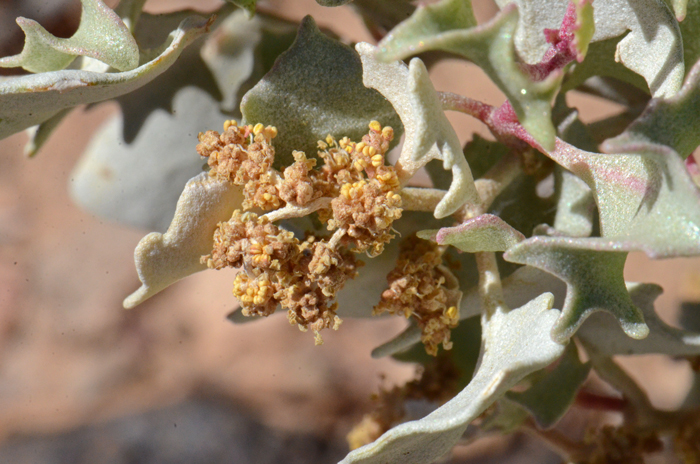
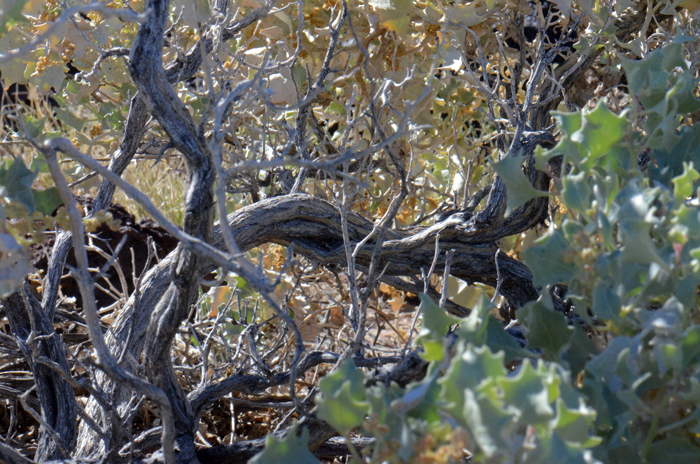
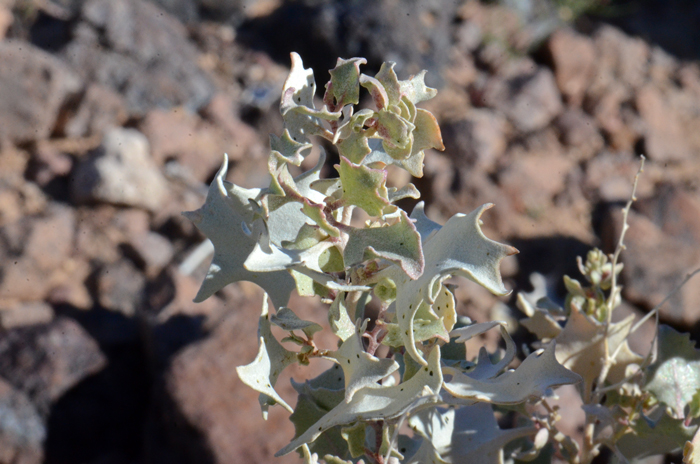
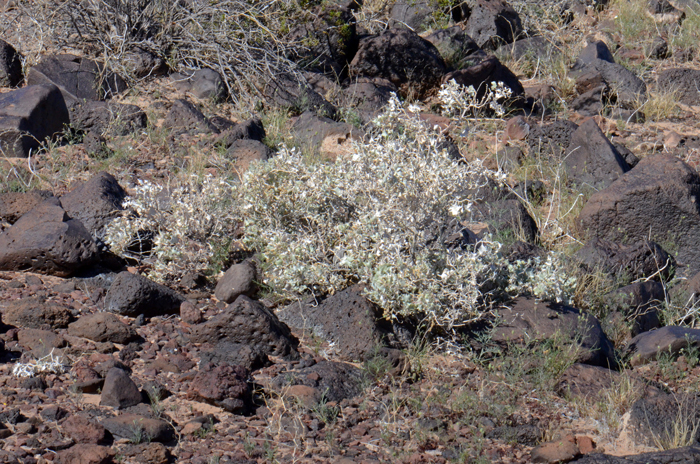
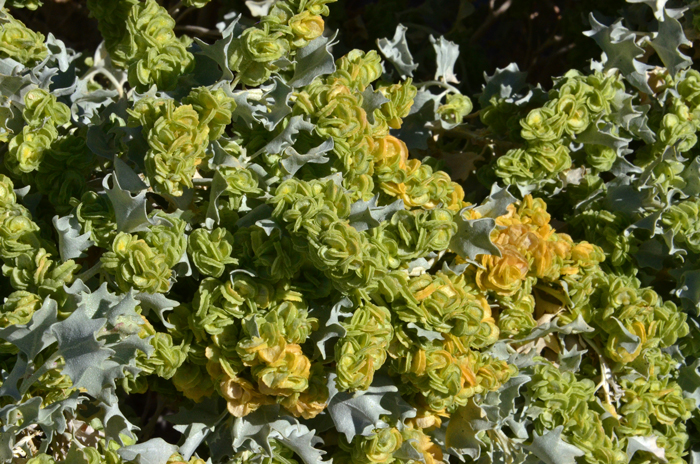
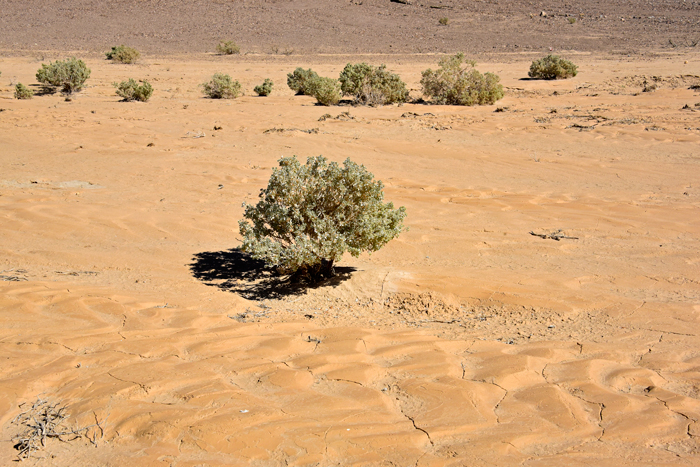
Scientific Name: Atriplex hymenelytra
Common Name: Desertholly
Also Called: Desert Holly, Silver Holly
Family: Chenopodiaceae, Goosefoot Family (now as sub-family Chenopodioideae in the Amaranthaceae Family).
Synonyms: ()
Status: Native
Duration: Perennial
Size: 1 to 5 feet tall and as wide; 2 to 3 feet in Texas.
Growth Form: Shrub; plants with a rounded shape; dioecious; no spines or other armament.
Leaves: Greenish to silvery white, leaves round or oval; evergreen; alternate and with petioles; margins mostly dentate, the surfaces covered with small silvery scales (scurfy).
Flower Color: Yellow to purple-brown; dioecious; fruits a pair of fruiting sessile to short-stalked, round, prominently veined bracteoles surrounding the seeds.
Flowering Season: January to March or April.
Elevation: Below 4,000 feet; Yuma County AZ below 1,000 feet.
Habitat Preferences: Dry, sandy or stony soil, saline soil and hills.
Recorded Range: Atriplex hymenelytra is found in the southwestern United States in AZ, CA, NV and UT. It is also native to northwest Mexico and Baja California.
North America & US County Distribution Map for Atriplex hymenelytra.
U.S. Weed Information: No information available.
Invasive/Noxious Weed Information: No information available.
Wetland Indicator: No information available.
Threatened/Endangered Information: In North America Atriplex hymenelytra is Salvage Restricted in Arizona.
In the Southwestern United States: Arizona has 25 species of Atriplex, California has 51 species, Nevada has 27 species, New Mexico has 21 species, Texas has 21 species, Utah has 35 species. All data is approximate and subject to taxonomic changes.
Comments: Atriplex hymenelytra is a warm desert shrub, found in both the Lower Sonoran and Mojave deserts. This species occurs with species of Larrea, Ambrosia, Ephedra and Yucca.
In Southwest Desert Flora also see: Australian Saltbush, Atriplex semibaccata, Four-wing Salt Bush, Atriplex canescens, Griffiths Saltbush, Atriplex torreyi var. griffithsii, Quailbush, Atriplex lentiformis and Wheelscale Saltbush, Atriplex elegans.
The species epithet hymenelytra makes reference to Hymen, a mid 16th century late Latin from Greek humèn meaning "membrane"; possibly a reference to the paired fruiting bracteoles surrounding the seeds

